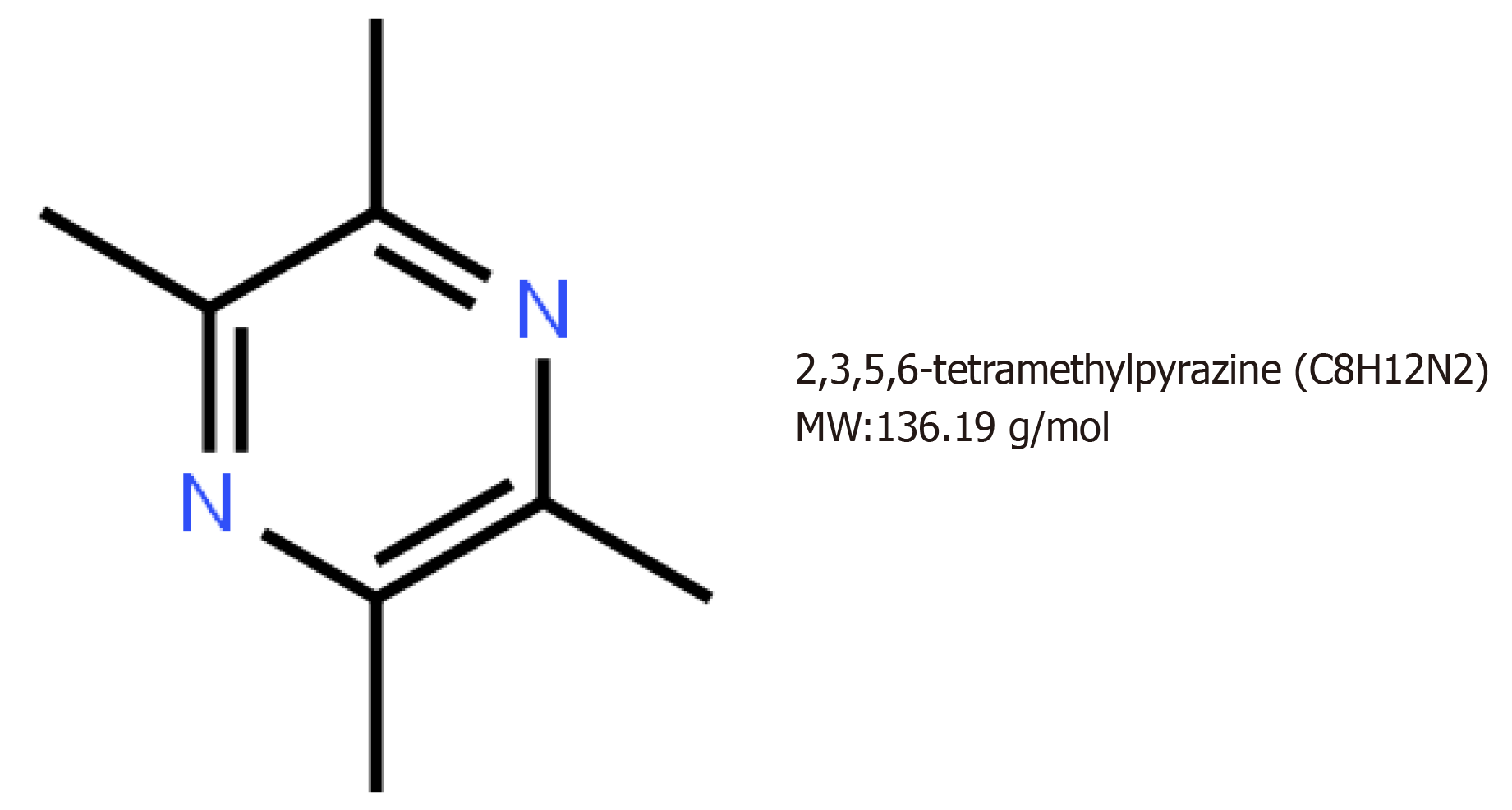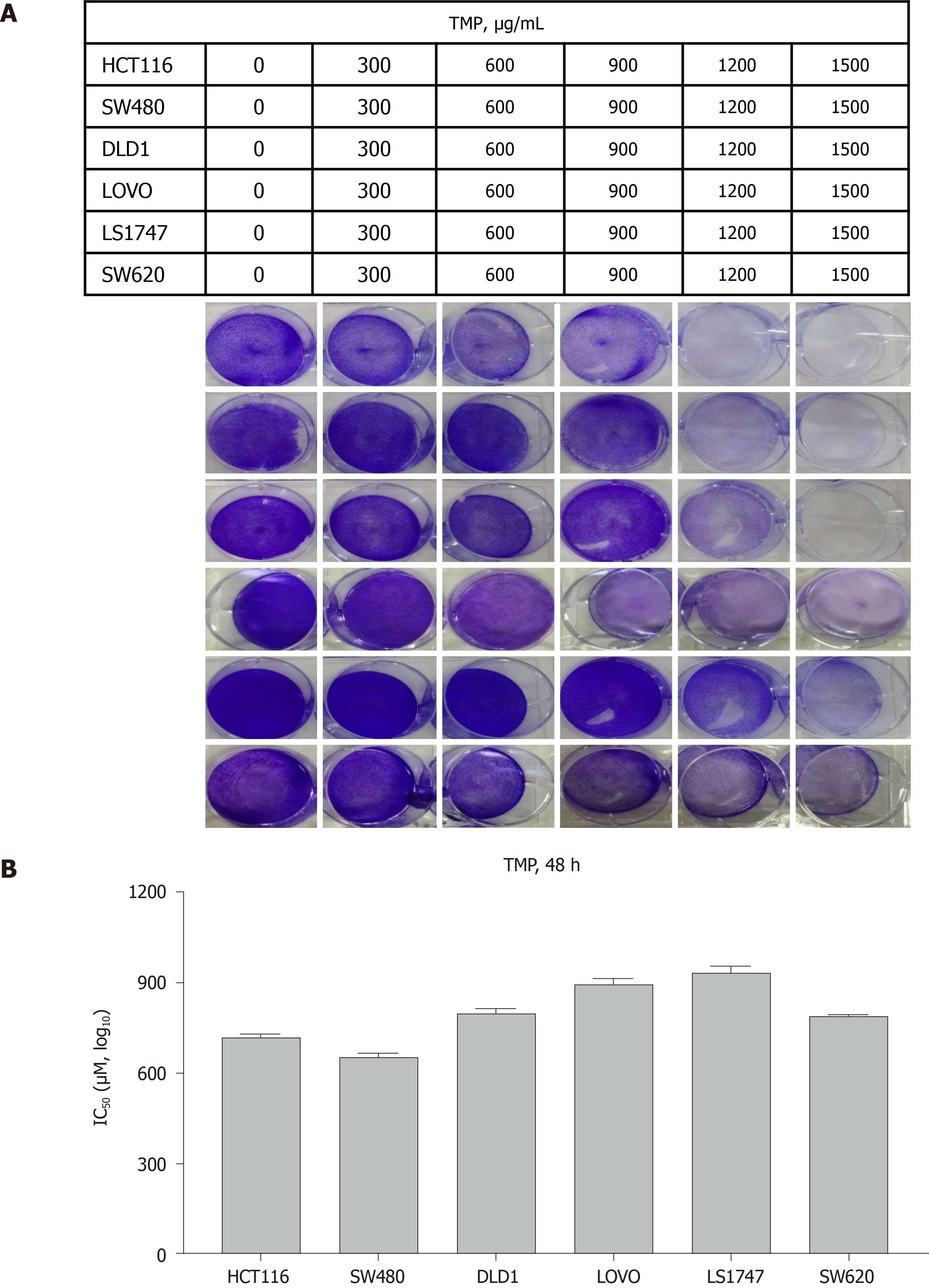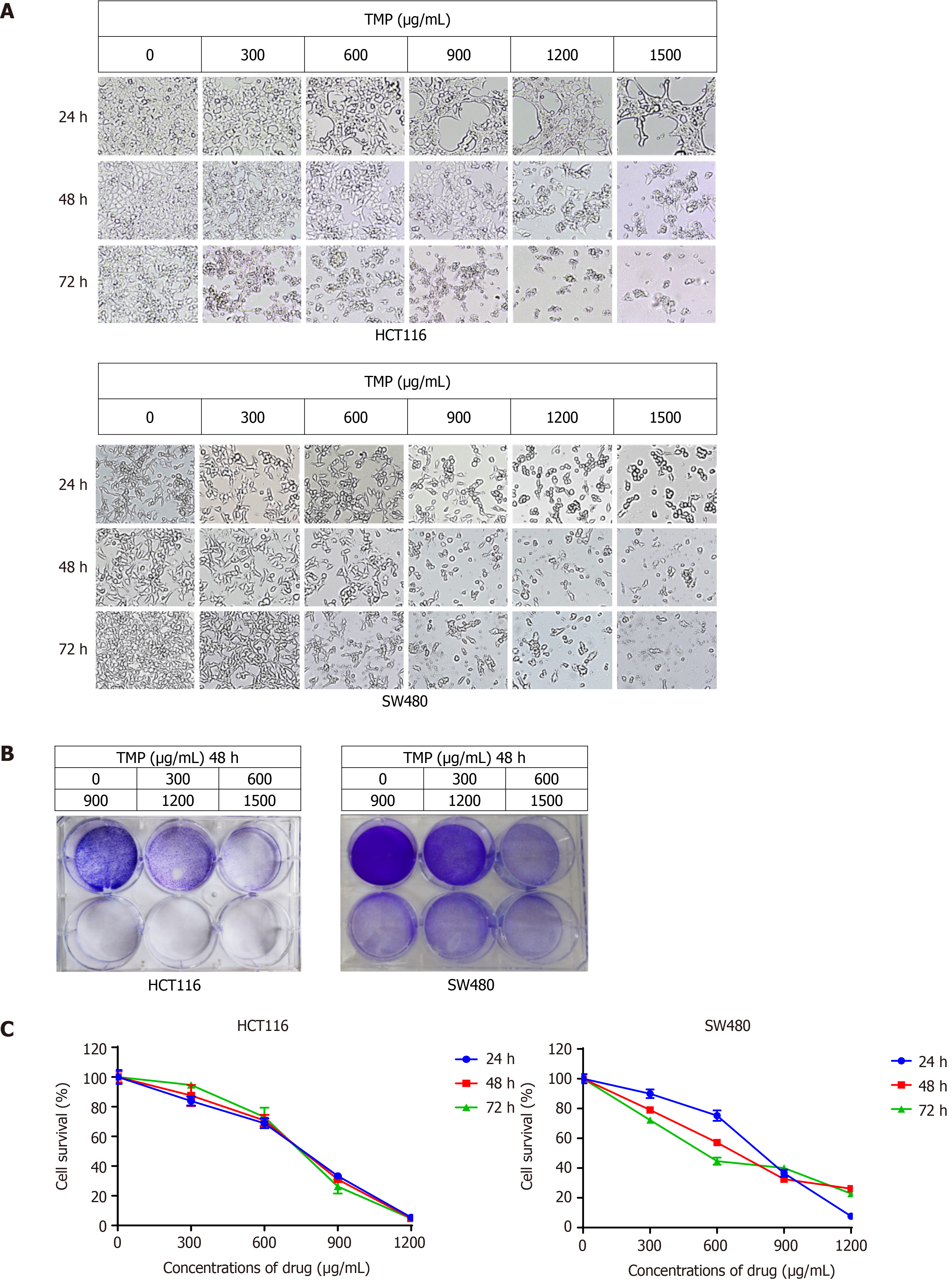Copyright
©The Author(s) 2021.
World J Clin Cases. Jun 26, 2021; 9(18): 4542-4552
Published online Jun 26, 2021. doi: 10.12998/wjcc.v9.i18.4542
Published online Jun 26, 2021. doi: 10.12998/wjcc.v9.i18.4542
Figure 1 Chemical structure of tetramethylpyrazine with a molecular weight of 136.
19 g/mol.
Figure 2 Tetramethylpyrazine suppresses the proliferation of colon cancer cells.
A: Tetramethylpyrazine significantly suppressed the cell viability in a dose-dependent manner, especially in SW480 and HCT116 cells; B: The 50% inhibition values in colon cancer cell lines. SW480 and HCT116 cells had the lowest 50% inhibition values. TMP: Tetramethylpyrazine.
Figure 3 Tetramethylpyrazine inhibits the growth of colon cancer cells in a dose- and time-dependent manner.
A: Cell morphology of SW480 and HCT116 cells treated with different concentrations of tetramethylpyrazine (TMP) observed by inverted light microscopy; B: Crystal violet staining assay for evaluating the SW480 and HCT116 cell viability; C: Cell Counting Kit-8 assay showed that the proliferation and viability of HCT116 and SW480 cells gradually decreased with increasing TMP concentration and prolonged action time. TMP: Tetramethylpyrazine.
Figure 4 Tetramethylpyrazine inhibits colon cancer cell proliferation by inhibiting S phase synthesis.
A: Tetramethylpyrazine (TMP) treatment increased the proportion of cells in the G0/G1 phase, whereas it decreased the proportion of cells in the S phase; B: The percentage of G1 phase cells significantly increased in cells treated with TMP at 600 µg/mL for 24 h. TMP: Tetramethylpyrazine.
Figure 5 Tetramethylpyrazine induces apoptosis of colon cancer cells.
A: SW480 and HCT116 cells were induced to have a marked increase in the proportion of apoptosis rate, especially when the concentration of tetramethylpyrazine reached 600 µg/mL. B: The SW480 cells showed early apoptosis, whereas the HCT116 cells showed late apoptosis.
- Citation: Li H, Hou YX, Yang Y, He QQ, Gao TH, Zhao XF, Huo ZB, Chen SB, Liu DX. Tetramethylpyrazine inhibits proliferation of colon cancer cells in vitro. World J Clin Cases 2021; 9(18): 4542-4552
- URL: https://www.wjgnet.com/2307-8960/full/v9/i18/4542.htm
- DOI: https://dx.doi.org/10.12998/wjcc.v9.i18.4542













